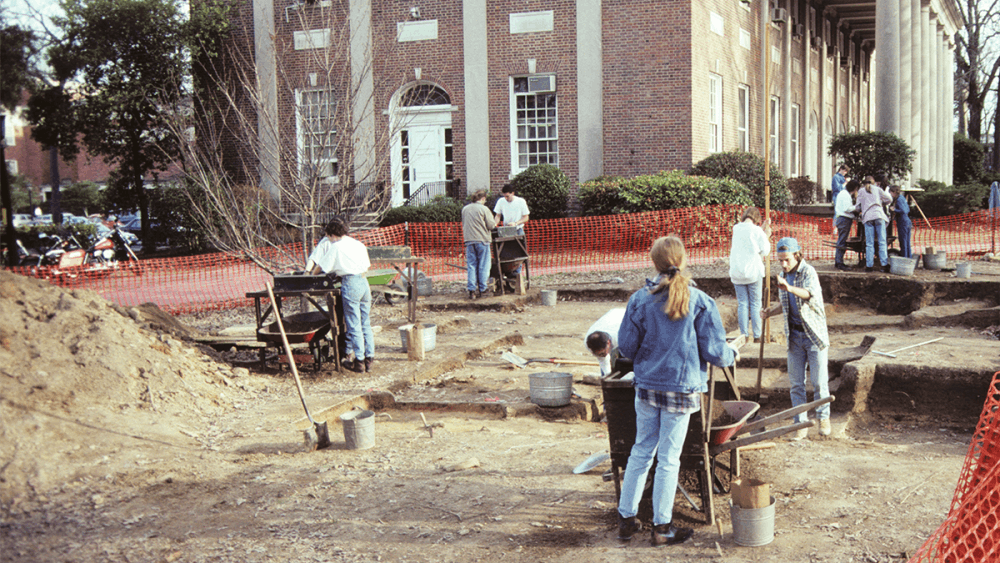The Research Laboratories of Archaeology at UNC are breaking new ground with the creation of their first virtual walking tour of archaeological sites on campus.
“Beneath Our Feet: A Walking Tour of Archaeological Sites at UNC-Chapel Hill” is an interactive digital map that fits any electronic device that launched this month, along with an updated version of the tour’s paper brochure.
The virtual tour allows the public to explore UNC’s original campus and 12 different archaeological sites made since 1991.
“(The tour) gives a sense of the history of the University in a way that brings it down to the daily lives of people, and also emphasizes how the campus has changed over time,” said Margaret Scarry, director of the RLA.
The sites delve into Chapel Hill’s history prior to the University’s founding, unearthing Native American artifacts and shedding light on life at UNC during its first 100 years.
“It’s not just seeing it from the viewpoint of what administrators or students wrote down, but we learn something about the builders of the campus and their lives and interactions, as well as parts of students lives that you might not otherwise get to see,” Scarry said.
The tour starts near the Carolina Inn at a stone-lined well construction workers discovered while repaving a driveway in the summer of 2018. The website also provides a 3D model of the well.
“You could describe what the well looked like or you could show a regular photo of it, but to have a 3D model that the viewer can interact with and manipulate gives them a far better sense of just exactly what that archaeological feature is,” said Steve Davis, associate director of the RLA, who worked on all of the sites.
The tour touches on many other archaeological sites, notably the Graham Memorial Site, which was the first campus excavation in 1993. Faculty and students discovered the remains of a tavern house, later to be a hotel and boarding house, called the Eagle Hotel.



